
Recognizing and Promoting Excellence in Sedation Dentistry

Dr. Michael Silverman
Founder and CEO
DOCS Education
Welcome to the 16th Annual Sedation Safety Week!
Thanks to the ongoing advances and expanded education in the field of sedation dentistry, more than 20 million anxious patients have conquered their fears in order to receive safe, pain-free, oral health care.
Leading this commitment to sedation safety for 25 years, is DOCS Education and its co-founder and president, Dr. Michael Silverman. A globally recognized lecturer, educator, and patients’ right advocate, Dr. Silverman is also the founder and national chairman of Sedation Safety Week.
Please join us for five consecutive days as we publish a series of informative articles designed to highlight the progress and benefits of sedation dentistry, as well as insights on the issues that may impact the health and safety of dental patients. We’ll also shine a light on a dental professional in the sedation community who has shown exceptional regard for their patients and practice.
We invite you to help us celebrate DOCS’ 25 years of dedication to sedation, and 16 years of hosting Sedation Safety Week!
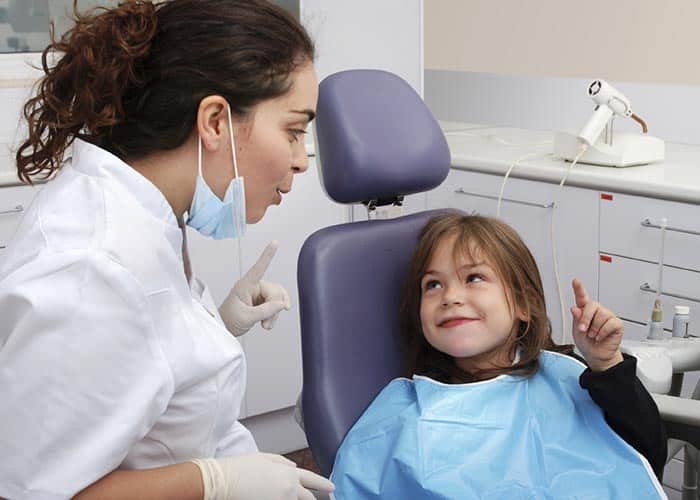
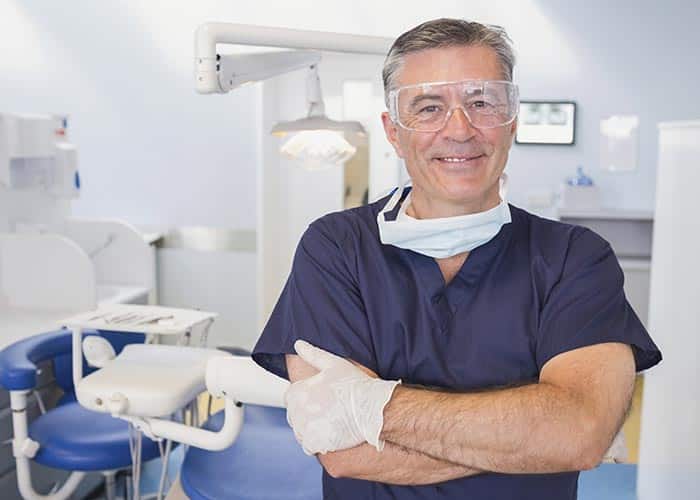

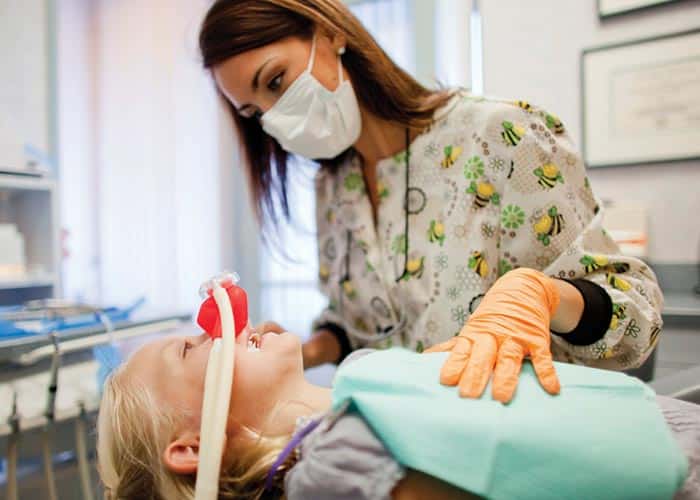
2024 Agenda
Check back here every day to find out what 2024's Sedation Safety Week has in store.
Do Dentists Have Sedation Anxiety?
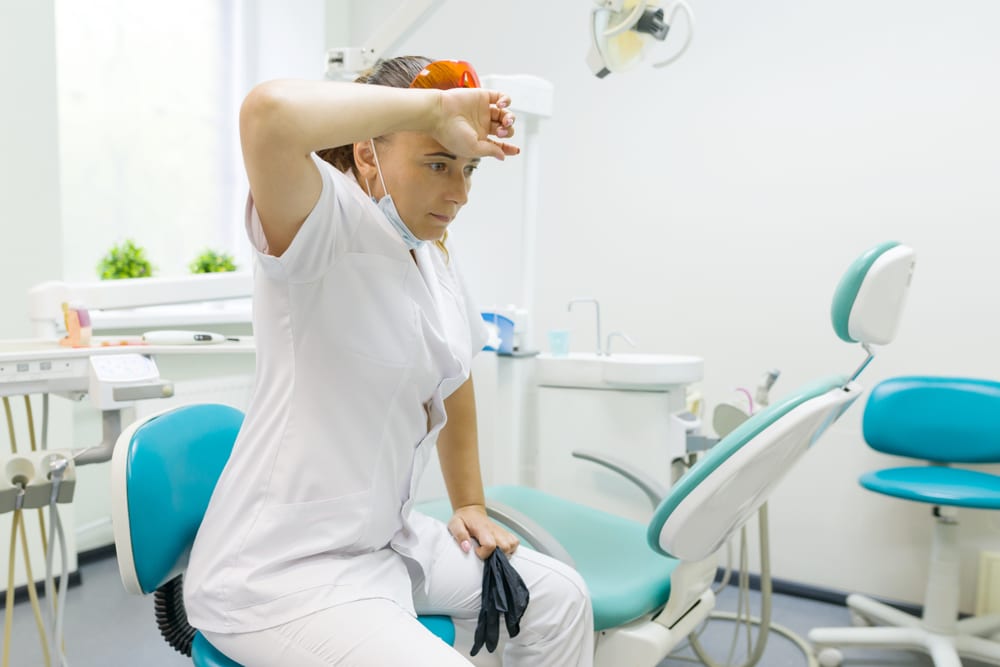
Patients and dentists alike are very familiar with the concept of dental anxiety. Differing studies show the percentage of people admitting to some level of fear or nervousness about visiting the dentist anywhere from 19% to well over half. The reasons may include:
- Fear of pain.
- Receiving bad news.
- Smells and sounds.
- Cost and overall expense.
- The act of simply stepping into the office.
Let’s face it, dental anxiety for patients is well documented. However, dentistry can be fraught with stress and mental health challenges for the practitioner as well. According to the American Dental Association (ADA), their 2021 Dentist Well-Being Survey Report showed the number of dentists diagnosed with anxiety to be more than triple the number reported in 2003.
Nobody likes to think of their dentist experiencing anxiety, but they are prone to stressors just like anyone else who runs a business. Add to that the pressure to provide high-quality care without making mistakes, and it can be a lot for even the most healthy and well-balanced professional.
Caring For Your Mental Health
Practitioners who provide sedation dentistry add another layer of responsibility to their patients and potentially more internal stress. Whether through oral conscious or intravenous (IV), some of the additional factors faced by sedation dentists are:
- Performing complex procedures.
- Managing nervous or difficult patients.
- Lengthier appointments.
- Medically complex ASA III+ patients.
- Constantly changing drug-drug interactions.
- Increased permitting and regulatory requirements.
- Emergency preparedness for worst-case scenarios.
It would be perfectly normal to feel anxious when dealing with any of these issues, but sedation dentists are also impacted by the worst outcomes that tend to make national headlines. In the case of a patient who received four root canals, eight crowns, and 20 fillings in a single visit, readers don’t need a lot of background to understand that serious mistakes were made.
But the public doesn’t always know the details behind tragic headlines that involve sedation, which may result in collateral unease for both patient and dentist. Even the most experienced sedation dentists aren’t immune to the fear of failure and the anxiety that accompanies that.
Anxiety Management
While the COVID-19 crisis certainly contributed to the increase in anxiety diagnoses in the ADA survey, the pandemic also shone a much-needed light on the mental health needs of dentists and their team members. Practices that provide oral or IV sedation must also be aware of the additional stressors.
So, what are some common-sense steps that dental professionals can take to reduce the risks of anxiety? Here’s a few suggestions:
- Take short breaks throughout the day to reset mentally.
- Don't pack the schedule too tightly, as rushing can lead to stress.
- Be prepared for emergencies by putting systems into place.
- Eat healthy, stay hydrated, and exercise regularly.
- Prioritize relaxation with deep breathing, meditation, or yoga.
- Maintain hobbies and activities outside of work to find balance.
- Communicate clearly with patients by explaining procedures and addressing concerns.
- Develop a support network with other dental professionals who understand the demands.
- Consult a therapist for guidance on improving stress management if necessary.
- Regularly increase skill level and confidence through continuing education.
Knowledge is Power
Successful sedation dentists have discovered that one of the best weapons for combatting anxiety and stress in their practice is the power of knowledge. State and federal regulations are put in place to keep dentists updated on learning requirements. However, organizations like DOCS Education offer a broad and diverse roster of programs to fulfill those CE needs and beyond.
Through 25 years of reliable expert training from DOCS Education’s master faculty, dental professionals have learned to overcome their patients’ fears and their own by incorporating safe and effective sedation into their practice.
Dentists, learn why safe sedation is a reliable tool that enhances patient comfort, facilitates successful procedures, and improves overall care. And if you have a perfect record, but are still a little nervous, we have the perfect course.
The Impact of Recreational and Medical Cannabis Use on Dental Sedation
Dentists must be aware of their patients' legal and illegal drugs to provide optimal care during sedation. This knowledge ensures patient safety and enables the team to deliver effective sedation treatment.
A Timely and Open Discussion
After California legalized medical marijuana (aka cannabis) in 1996, 40 states and the District of Columbia have since legalized it for medical use, while 24 states and the District of Columbia have legalized cannabis for recreational use.
To provide the highest level of care, dentists must know about their patients' health, including legal (and illegal) drugs. Therefore, the dental team providing safe sedation must have a working knowledge of their patient's medications and substances, whether prescribed or otherwise. The reason for this is that cannabis can impact the primary goals of sedation dentistry, which are:
- To keep patients safe.
- Ensure the comfort of patients while receiving care.
Recreational and Medical Cannabis
Cannabis is a plant used for recreational and medicinal purposes. Federally illegal but legal state-by-state in the U.S., it's crucial for dentists to realize that cannabis use (either recreational or medical) is highly common. It's also no longer something dentists should assume patients will volunteer to tell you. Instead, medical professionals should be forthcoming in asking the question.
When combined with sedative medications, some science suggests cannabis will make nausea worse, while others suggest it will lessen it. However, nausea and vomiting in sedation patients can be dangerous, so precautions are advised. Additionally, despite being a CNS depressant, cannabis can cause tachycardia, discomfort, and a potentially hazardous situation in sedation patients. Therefore, there are some key elements for sedation dentists to be aware of, including:
- Dentists should ask patients how long they've used cannabis. How often? How much? And in what form?
- Evaluate for respiratory disease.
- If they are a heavy user or long term, ask about nausea and vomiting and consider using antiemetic prophylactically.
- Patients must withhold use on the day of sedation.
- Whenever possible, keep sedation appointments to three hours or less.
- Monitor HR closely when using vasoconstrictors.
THC and CBD - What's the Difference?
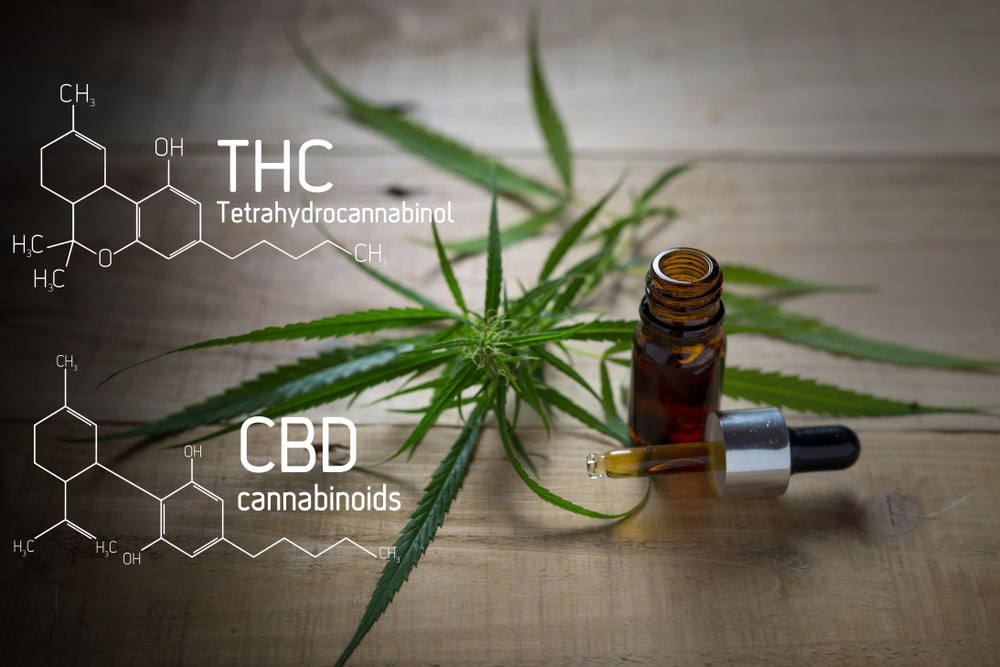
Cannabis sativa is used to create many products containing tetrahydrocannabinol (THC) and cannabidiol (CBD).
THC is a chemical component that binds to the nervous system and causes euphoria. The human brain consists of millions of nerve cells linked together through neurotransmitters. These are responsible for relaying impulse signals to and from the brain. One such neurotransmitter is called anandamide, which binds to cannabinoid receptors with high affinity and mimics the psychoactive effects of plant-derived cannabinoids. These receptors are responsible for pleasure, memory, concentration, coordination, and other sensory functions.
When introduced into the body, THC binds to these same receptors and produces the same effect of euphoria and pleasure.
CBD is a bit different. While its chemical structure is similar to THC, it doesn't actively bind to these receptors. As such, CBD is not psychoactive when compared to THC.
CBD is mainly found in edibles and is usually used for medicinal purposes – particularly pain relief. At the same time, THC is predominantly present in the vapor and smoke form of cannabis, which is more for recreational use. However, medicinal products sold in dispensaries in states that have legalized cannabis often contain mixtures of both THC and CBD at various levels.
Cannabidiol (CBD)
- Not psychoactive compared to THC.
- May reserve THC intoxication or sedation.
- Inconclusive data to support its use in the treatment of anxiety or pain.
- Same drug interactions as THC.
- Same treatment recommendations with sedation as with THC.
What Seddation Dentists Should Know About Cannabis
Cannabis Drug Interactions
- CNS depressants may enhance the CNS depressants of cannabinoids.
- CYP3A4 Inhibitors (e.g., Clarithromycin, Diflucan) may increase the serum concentration of THC.
- Vasoconstrictors may enhance the tachycardia effect of cannabis.
- All interactions are [C] level interactions according to Lexi-Comp
Cannabis & Sedation – Recommendations
- Ask how long (long-term use effects), how often (N&V and physical dependence level), how much (long-term use effects), and what form (possible respiratory disease).
- Evaluate for respiratory disease (baseline O2 sat, existing diagnosis, or medications).
- If heavy (>2X/day) or long-term (>5yrs.) user, ask about nausea and vomiting, and consider using antiemetic prophylactically.
Withhold use on the day of sedation
- Whenever possible, keep sedation appointments to three hours or less.
- Monitor heart rate closely when using vasoconstrictors.
FDA Approved, Epidiolex
The FDA has not approved the cannabis plant for medical purposes. However, individual cannabinoids have been approved by the FDA for use in medications.
Epidiolex contains a purified form of CBD derived from cannabis and has been approved for treating seizures associated with severe and rare forms of epilepsy called Lennox-Gastaut syndrome and Dravet syndrome.
The FDA has also approved Marinol and Syndros, which contain dronabinol (synthetic THC), and Cesamet, which contains nabilone (a synthetic substance similar to THC). In addition to treating nausea and vomiting caused by chemotherapy, dronabinol is also used to treat loss of appetite and weight loss in HIV/AIDS patients.
Have a Conversation with Your Patients
Identifying cannabis users can be a delicate matter for some patients. Therefore, healthcare practitioners should also realize that some patients may be reluctant to share such information for fear of judgment.
Yes – sedation dentists need to be aware of their patients' cannabis usage, but not by being so forward that they become fearful or hesitant to share such an essential part of their medical history. The most straightforward approach is including a question about cannabis use in the medical history questionnaire and reassuring the patient that these are entirely confidential and only used as a preliminary scan for their health.
Additionally, in states where cannabis remains illegal, patients may be more hesitant to disclose the use of "street drugs." Therefore, they must be assured that any disclosures will not be shared with law enforcement.
Another aspect to consider is how cannabis reacts with other medications, mainly analgesics and sedatives. Dentists must also be aware of the patient's cannabis use, so their heart rate can be more closely monitored when using vasoconstrictors.
Scientific support and additional resources are available here.
Join Dr. Feck for 25 Safety Tips Tailored to Sedation Dentists
Webinar Details
Title: I Have a Perfect Record But... I'm a Bit Scared
Date & Time: Wednesday, March 13, 2024 at 5:00 pm PST / 8:00 pm EST
Register: Sign Up for Webinar →
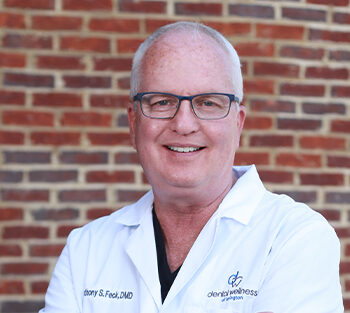
In celebration of 25 years of DOCS Education's dedication to safety and excellence in sedation dentistry, we are delighted to welcome co-founder and Dean of Faculty, Anthony Feck, DMD, to share his expertise on maintaining an impeccable safety record in patient care.
Dr. Anthony Feck is an internationally recognized lecturer, clinician, author, and educator. He has a long-standing periodontics and restorative dentistry career, serving as an Associate Professor at the University of Kentucky College of Dentistry. He co-founded DOCS Education with Dr. Michael Silverman, serves as Dean of Faculty, and operates a private practice in Lexington, Kentucky.
Presented by DOCS Education as part of its Elite Learning Series, Dr. Feck will focus on 25 critical safety tips tailored for sedation dentists treating diverse populations. Whether striving for perfection or wanting to elevate your expertise, this event offers a once-in-a-lifetime opportunity to gain knowledge, boost confidence, and draw inspiration from 25 years of safe sedation dentistry training.
By attending, you'll understand:
- The significance of a comprehensive medical history.
- How to navigate drug interactions cautiously.
- Best practices in assessing patient health in challenging scenarios.
- The golden rule for identifying high-risk patients.
Furthermore, you'll discover the link between safe sedation and hypertension, master the art of vital sign monitoring, and appreciate the significance of reversal agents for both sedatives and opioids. In addition, Dr. Feck will shed light on special considerations for patients aged 65 and above, provide guidance on managing HIV patients with care, and delve into best practices for prescription writing for dentists.
Take advantage of this empowering event to revolutionize your practice and enhance patient safety.
This webinar is free to attend. DOCS Education offers 1.5 CE for members and trial members attending the live presentation.
The trial membership offer is open to dentists who have not participated in the trial membership program within the past two (2) years. After 60 days, if not canceled, the trial membership will upgrade to a standard membership at $54.95/mo. for a one-year commitment. Refer to the terms of service for more details.
The Impact of Glucagon-Like Peptide Receptor Agonists on Conscious Sedation with Recommendations
By Anthony S. Feck, DMD, Dean of Faculty, DOCS Education
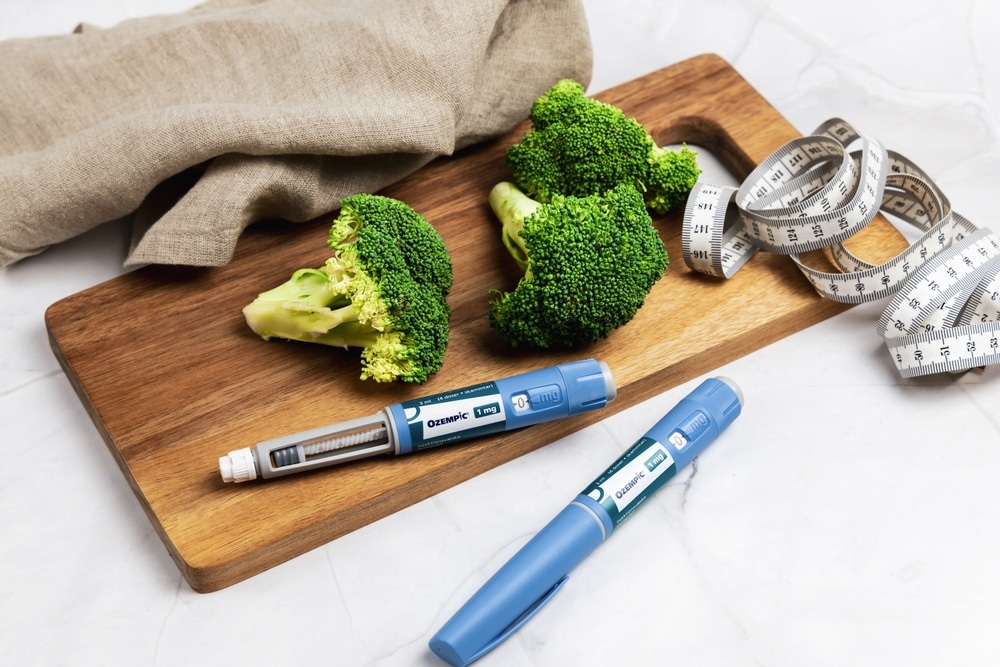
As a weight loss aid, Ozempic mimics a natural hormone that tells the brain you're full. By increasing the time it takes for food to leave the body, it also slows digestion. Although it has a minor effect on gastric emptying time, the most common side effects are nausea and vomiting.
For patients taking weight loss drugs, it is crucial to exercise caution during sedation as their protective reflexes may be compromised. Therefore, sedation dentists must carefully monitor these patients and take appropriate measures to ensure their safety.
Understandably, an anesthesiologist providing general anesthesia will have a different protocol than a dentist providing conscious sedation. Despite the possibility of withholding all food for 48 hours before the appointment, patients may experience difficulty adhering to the restriction and may experience hypoglycemia during conscious sedation.
GLP-1 Receptors
Glucagon-Like Peptide (GLP-1) receptor agonists are used to treat diabetes by activating GLP-1 receptors in the pancreas, which leads to enhanced insulin release and reduced glucagon release responses that are glucose-dependent, with a consequent low risk for hypoglycemia. They have also been shown to reduce the rates of major adverse cardiovascular events, comprising non-fatal myocardial infarction, non-fatal stroke, and cardiovascular death, in patients with type 2 diabetes mellitus.
GLP-1 receptor agonists have also been shown to cause weight loss in some individuals. In 2014, the FDA approved the first of these drugs specifically for weight loss for people with a BMI of 30 and above or a BMI of at least 27 with one weight-related comorbid disease, which affects more than half the U.S. adult population. The weight loss is thought to be caused by slowing digestion by increasing the time it takes for food to leave the body. There is also evidence of actions within the CNS that result in reduced hunger.
Precautions Advised
While these drugs are considered a significant advancement in the treatment of diabetes and obesity, they are not without negative side effects in some individuals. They come with a US Boxed Warning of a risk of thyroid C-cell tumors, medullary thyroid carcinoma, and are contraindicated in patients with multiple endocrine neoplasia syndrome type 2.
Since elevated liver enzymes can be a concerning side effect for individuals taking GLP-1 receptor agonists, liver function should be monitored regularly.
These drugs have also caused new or worsening kidney disease, including kidney failure, in some people. People taking GLP-1 receptor agonists may become dehydrated from vomiting or diarrhea, causing kidney problems.
In addition, studies have linked GLP-1 receptor agonists to skeletal muscle breakdown.
Conscious Sedation Recommendations
At present, there isn’t enough evidence-based data to make any definitive protocol recommendations for patients taking GLP-1 receptor agonists undergoing sedation procedures. However, it is reasonable to assume that the increased risk of nausea and vomiting during anesthesia increases the risk of aspiration in patients taking these drugs. It is also reasonable to assume this risk is greater the deeper the depth of sedation when the patient’s protective reflexes that prevent aspiration are less intact.
Given the increased potential for nausea and vomiting, it is important that the pre-sedation instructions allow for a period of withholding these drugs prior to sedation based on their half-life. The half-life of these drugs varies widely (see table below) from two weeks with the extended-release form of exenatide (Bydureon Bcise®) which is injected weekly, to 13 hours for the daily injected liraglutide (Victoza®, Saxenda®).

Until there is more evidence-based research on the impact of GLC-1 receptor agonists on anesthesia, specifically conscious sedation, DOCS Education recommends a medical consult with the patient’s PCP or endocrinologist, and absent the strong recommendation to the contrary from their prescribing physician, have the patient withhold their weekly injectable GLP-1 receptor antagonist one week prior to sedation, and their daily GLP-1 receptor agonist on the day of the sedation appointment, and be NPO six hours prior to the appointment as usual. These recommendations closely align with those of the American Society of Anesthesiologists (June 28, 2023).
The patient taking a GLP-1 receptor agonist for treatment of diabetes may also be taking other diabetic medication such as Metformin, Glipizide, or Jardiance. Given that they will be NPO for six hours prior to the sedation procedure, they should withhold these other diabetic medications as well on the day of the sedation appointment.
The sedation team should record a baseline blood glucose at the sedation workup and take blood glucose readings on the day of sedation at presentation, every hour thereafter, and upon dismissal. Sedations should be kept on the light side, and antiemetic medications should be a part of the protocol. This means hydroxyzine (25-50mg) for oral sedation, and ondansetron (4mg) for intravenous sedation.
Should the patient have GI symptoms such as nausea and/or vomiting on the day of and prior to the sedation appointment, the procedure should be rescheduled.
Advocating for Dental Patients with Disabilities

The use of terms ‘disabled’ and ‘special needs’ have fluctuated in recent years, both legally and in common vernacular, but for the approximately 42.5 million Americans, disabilities are a fact of life regardless of the moniker. According to the 2021 U.S. Census report, this group may include those with cognitive, hearing, vision, mobility, and self-care difficulties.
The common denominator is a need for adequate oral health care which unfortunately, is often a hurdle for this demographic. Depending on the disability, patients can face challenges that include:
- Physical accessibility in the dental office.
- Communication barriers for patients with speech or hearing impairments.
- Heightened sensitivity for those with sensory processing disorders or autism.
- Behavioral challenges for individuals with intellectual or developmental disabilities.
- Transportation and financial obstacles.
- Lack of provider training or experience in treating patients with specific disabilities.
Addressing these concerns often requires dental offices to implement accessibility measures, specialized equipment, and staff training to provide appropriate accommodations and ensure that disabled patients receive high-quality, inclusive dental care. The American Dental Association (ADA) provides guidelines for additional special considerations.
Sedation Dentistry and Patients with Special Needs
Just as incorporating sedation into a pediatric dental practice can be an asset when treating young children, different forms of anesthesia can enable safer procedures for adults who also lack the abilities to self-regulate, be it their movements, emotions, or understanding.
Sedation dentistry can be highly beneficial when treating patients with special needs in many ways such as dealing with heightened anxiety and fear. It may also improve their ability to cooperate by providing a state of relaxation and compliance, allowing the dentist to perform the treatment and a longer appointment if necessary.
Patients with certain disabilities may have a lower pain threshold or difficulty communicating their discomfort. Sedation can provide effective pain management, ensuring a more comfortable experience during potentially long or invasive procedures.
Different levels of sedation – nitrous oxide, oral conscious, or IV – may be employed depending on the patient's specific needs, the complexity of the procedure, and the dental practice’s capabilities. The type of sedation technique is determined by the dentist, and because many patients with special needs have other health concerns or comorbidities, a thorough medical evaluation is critical prior to treatment.
The Benefits of Evidence-Based Dentistry
There was a time when dental education and patient care was “by the book,” leaving little room for intuition or variation. The concept of evidence-based dentistry (EBD) is now embraced by the ADA, dental students, and teaching institutions that understand adjustments must be made based on the patients’ needs – not the textbook.
The EBD approach is particularly applicable for patients with disabilities or special considerations. Making accommodations for the challenges listed above can go a long way in making the dental experience much easier for the patient.
And this goes for the dentist and team as well. Addressing the individual’s needs with sedation or other measures can ensure a safer, more predictable procedure.
Changes on the Horizon for Specialized Needs
While there are many practitioners who specialize in the disability-related demographic, a lack of access to care and affordability remains. A 2021 study concluded that deep sedation is preferable for patients with severe disabilities, however if those needs can’t be met in the dental office, they’re often referred to a hospital for general anesthesia.
Not only costly, but the extended wait for availability can then compound the patient’s oral health issues. In 2022, the American Academy of pediatric Dentistry, American Association of Oral and Maxillofacial Surgeons, and the ADA approached lawmakers for help in improving operating room availability for both children and adults with special needs.
Additional advances in access and awareness can be seen on the horizon:
- In recent years, the Affordable Care Act’s Medicaid expansion has been adopted by 41 states (including DC), which will provide more oral healthcare to those in need.
- Research has shown that the use of IV sedation in patients with disabilities produced longer lasting outcomes between treatments.
- There has been a growing commitment by dental schools to expand education in the treatment of people with disabilities, both physical and developmental. Dedicated facilities have been created by the New York University College of Dentistry, University of Pennsylvania, and University of Pittsburgh, to name just a few.
- Most recently, the University of Texas Health San Antonio School of Dentistry opened the Phil and Karen Hunke Special Care Clinic which includes treatment rooms for patients with intellectual and cognitive needs, as well as physical disabilities.
While these are encouraging signs, there is always an ongoing need for advocacy for the disabled community. Increased access to special considerations like sedation dentistry can and will make a big difference in the oral health, overall health, and peace of mind of individuals with disabilities and their caretakers.
Dr. Brad Bynum, DMD, 2024 Safe Sedation Dentist of the Year
From mastering DOCS sedation training to unlocking the wonders of compassionate care, Dr. Bynum's insights are a must-read for aspiring dentists and dental professionals seeking to take their practice to the next level.
By Genni Burkhart, Incisor Editor

With 44 years of experience, Dr. Brad Bynum, DMD, has honed his skills and transformed his Valdosta, Georgia dental practice, North Valdosta Dental Care, with his expertise in sedation dentistry. His extensive training and proficiency with over 1,000 sedation cases have allowed him to provide exceptional dental care with a compassionate touch.
When asked if he ever pictured practicing dentistry without sedation, his response was unwavering: "Sedation dentistry has revolutionized my practice, allowing me to offer an unparalleled dental experience for my patients. It's a game-changer!"
Dr. Bynum earned a BS in Microbiology from the University of Georgia and a DMD from the Medical College of Georgia in 1980. He's a member of the American Dental Association (ADA), an honorary fellow of the Georgia Dental Association, and an active member of the American Academy of Implant Dentistry. He received his Mastership in the Academy of General Dentistry in 2015 and his Fellowship from DOCS Education in 2006.
Three doctors work in Dr. Bynum's practice, all of whom have had sedation dentistry training from DOCS Education.
Dr. Bynum states, "We consider ourselves a general dental practice since we provide full-mouth reconstruction using K7 technology and guided implant placement using Planmeca CBCT and Asiga 3D printers. Additionally, we place PRGF with bone grafts, use Itero Scanners for Invisalign, and use them for crown and bridge procedures. Furthermore, we provide endodontic treatment, removable partial dentures, Geneva Dentures, dental fillings, cleanings, and nonsurgical periodontal care."
A Legacy of Sedation Dentistry
After practicing sedation dentistry since 2002, Dr. Bynum states, "Early on, I thought 10% of patients had high fear, but it did not take me long to realize it was closer to 75%. Patients manage to hide it very well."
Amanda, the office manager at North Valdosta Dental Care, further explains, "Sedation has allowed our practice to help patients overcome their dental fears and enjoy visiting the dentist. It's amazing to see patients progress from anxiety at their first appointment and fully relaxed and satisfied after treatment. It's a full-circle transformation and makes everything we do worthwhile. Patients come back smiling from ear to ear."
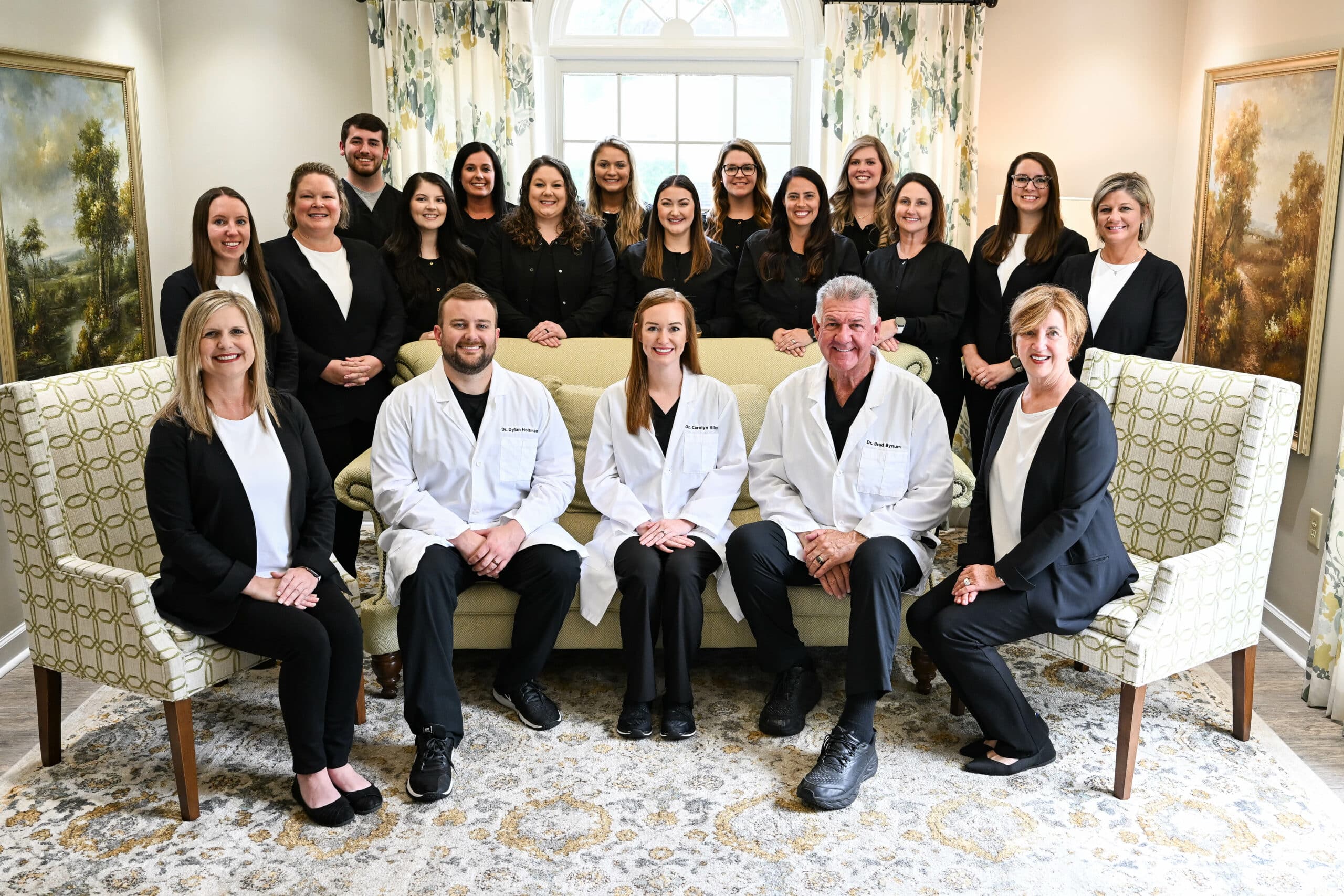
From the business aspect, sedation dentistry has allowed Dr. Bynum's practice to see more productive cases – patients who choose sedation tend to do more treatment all at one visit. Most of their patients desire to have the dental care they need. However, some struggle with dental anxiety. Those patients want to care for everything at once when they come in. Sedation dentistry allows these patients to get the care they need (and want) without fear.
Reflecting on his 44 years practicing dentistry and 22 years of using DOCS protocols, Dr. Bynum remarks, “I feel history will judge Dr. Silverman as one of those few remarkable visionaries who have had a tremendous impact on our profession in the last 100 years. He has assembled an excellent faculty: Dr Leslie Fang, Dr. Anthony Feck, Dr. Carol Wilson, and Jim Bovia, EMT-P. He continues, “I’m thankful for the vision, commitment, and tireless effort in making DOCS Sedation protocols available to every dentist across the United States. I know my patients are incredibly grateful.”
Personal Life
Married for 33 years, Dr. Bynum and his wife, Vicki, have two sons, Bradley and Aulden. An avid lifelong Georgia Bulldogs fan, one of his proudest moments was when his son Aulden played for the Bulldogs in the Rose Bowl and 2017 National Championship game. During his free time, Dr. Bynum likes playing golf and bass fishing on the beautiful lakes in Georgia and Florida.
Giving Back
Since 2017, Dr. Bynum's practice has participated in Smiles for Freedom (SFF) (missing 2020 due to COVID) and donated over $141,000 to veterans.
Supporting the Children's Advocacy Center (CAC) of Lowndes County is one of their team's favorite community involvements. Annually, the CAC assists over 700 children and families who have been the victims of abuse. Dr. Bynum and his team are passionate about supporting the CAC by purchasing Christmas presents for these children and attending their annual fundraising dinner.
Sedation Dentistry: A Case Study
“Our patients are so grateful for sedation dentistry.”
While some dentists consider dental fear the primary reason a patient requests sedation, Dr. Bynum has found that many patients use sedation to relax due to the length of the procedures.
“Peggy was a 65-year-old patient who came to our practice missing the enamel on her teeth. She had a super erupted molar on her lower right, responsible for her issues. She recently moved to our area but told us she had not visited the dentist in years due to fear. She stated that she only came because she was on a porch swing with a grandchild, and the child looked at her and said, ‘Grandmother, let's go inside and brush our teeth.’
“Peggy was very embarrassed. It took courage, but she called. Our team developed a special relationship with Peggy. We did a K7 workup for her occlusion issues and full mouth reconstruction. She continued her routine visits and, without fail, would walk into our reception area and ask, ‘Do I have to be here?’
“Peggy has since moved back to Atlanta, and we miss her.”
Beyond Financial Rewards
Dr. Bynum explains how impactful sedation dentistry has been to his practice and patients.
"I have always been on the leading edge of new procedures and continuing education. So, the sedation techniques I learned through DOCS were a natural fit for our practice. It has always been said that 50% of the population only goes to the dentist if there is a severe emergency. Another 25% go sporadically. Much of people's lack of dental care is due to fear. Now I realize that much psychology is also linked to the mouth. It is the gateway to our body; it is our sex appeal; it's how we nourish ourselves, and it's how we communicate.
“Our smile can lift those around us. However, whenever we enter a patient's mouth, we invade their space. I find many patients are fearful due to an unpleasant dental experience in the past. They stay away due to this fear.
“As their mouth deteriorates, the fear is multiplied by embarrassment. Their teeth and smile become so unsightly that they are embarrassed to seek help until they have no choice. So, when you have all the psychological components involved with the oral cavity and add fear and embarrassment, it overwhelms many patients. To overcome all these factors, sedation dentistry is the only choice."
For aspiring dentists or those looking to expand their services, Dr. Bynum is a perfect example of how venturing into sedation dentistry opens up a lucrative and mutually beneficial opportunity for patients and dentists alike. As he wisely advises, “The benefits of offering sedation dentistry go beyond financial rewards. It not only allows dentists to perform more comprehensive dentistry in fewer appointments but also satisfies the patient's need for efficient and convenient treatment.” He concludes, “mastering comprehensive dentistry and incorporating sedation dentistry using DOCS Education training and protocol, dentists can create a practice filled with delighted patients while experiencing a sense of fulfillment in providing the best possible care.”